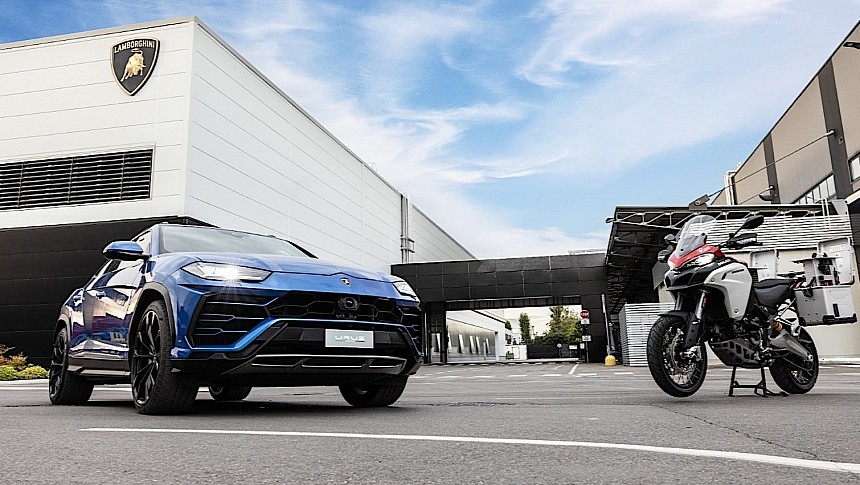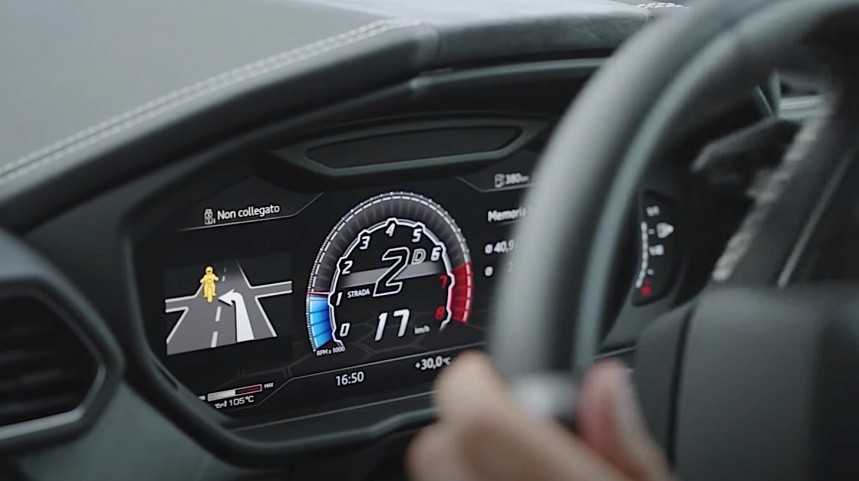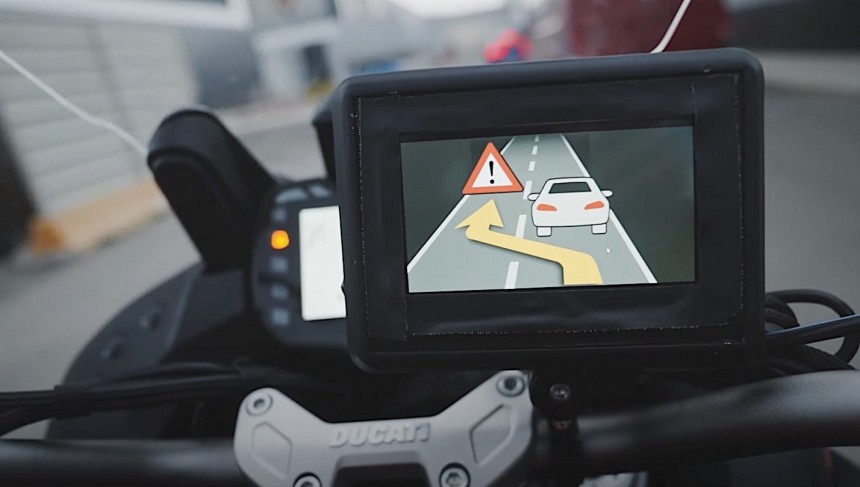Now that the cars we drive are more like gadgets on wheels than tools to satisfy our basic transportation needs, the automotive world can finally turn its attention to something that it has been pursuing far too long now: making cars and motorcycles capable of talking to each other.
We have known of this concept for a long time now, and we generally call it Vehicle to Vehicle (V2V) communication. It's something that in the not-so-distant future will allow cars and motorcycles to automatically inform each other about their position, speed, direction of travel, or unexpected hazards on the road. And that will, undoubtedly, make driving and riding a lot safer.
Sadly though, despite the efforts made by some car and moto companies, to date there are no V2V systems in the purest sense in operation. That's because there are a lot of challenges to be overcome, some more complex than others.
Those involved in developing V2V remain optimistic that the hurdles disappear, and they keep pressing on. The latest example of that comes from Lamborghini and Ducati, who together presented last week a comms system that can work between a motorcycle and a car.
The demo was held at the Lausitzring race track in Germany and was backed by the Connected Motorcycle Consortium (CMC). That's an organization established in 2016 that includes bike makers BMW, Honda, KTM, Yamaha, and Ducati. Its main and stated goal is to "include motorbikes in the future of connected mobility to improve the safety of motorcyclists."
In the six years that have passed since its formation the group hosted several such demo events, but we're yet to see something tangible reach the industry. The prospects of what's to come, as seen over in Germany last week, are exciting to say the least.
For the most recent run a Lamborghini Urus was used, together with a Ducati Multistrada. The SUV's sensors were integrated with the bike's comms so that the two-wheeler could inform the SUV about its position. More to the point, three systems were put to the test: intersection movement assist, left turn assist, and do not pass warning.
In the first case, intersection movement assist, the scenario called for an intersection with reduced visibility and a bike approaching from a busy road at the same time as the SUV approached from a secondary road. A fixed obstacle totally blocked the view of the rider and driver, so none of them could see each other.
Using a V2V system that's still under wraps and was developed by Ducati, the two vehicles did however see each other. When that happened, a warning signal was displayed in the Urus, letting the driver know a motorcycle was approaching.
The same motorcycle warning was shown on the Lambo's dashboard for the left turn assist scenario. That called for the two vehicles to travel on the same road from opposite directions, with the driver planning to make a left turn. Because there are times, even in ideal conditions, when a bike is hard to spot even when approaching head-on, the V2V system warns the four-wheeled vehicle not to proceed with the left turn as a bike is approaching from the front.
Both of the above scenarios warned the driver in the SUV about the presence of the bike, but the do not pass system turned things the other way around. The scenario had a bike on the verge of overtaking a large vehicle in a line of traffic, while the car in front of the one to be passed, not visible to the rider, was planning to make a left turn.
The system kicked in as soon as the Urus informed the bike about the other car's intentions, and the bike sent its rider a warning not to pass.
To better illustrate how all of the above is supposed to work, you can watch the short video below this text, with Ducati and Lamborghini engineers explaining how the warnings work and why.
The tech used in this test was developed by Ducati together with Bertrandt and Nfiniity. On the bike itself it translates into the fitting of an additional screen to show the warning signals, and that's why you may find the instrument panel of the Multistrada to look a bit different than what you're used to from the production bike.
Although it looks promising and ready to be implemented, the Ducati V2V tech is not by any means to be implemented on a large scale. Its success would require, for instance, that all bikes and cars, regardless of make and model, use the same system. I mean, just think about it: how often do a Multistrada and an Urus cross each other's paths on the road?
At the time of writing, there is no exact timetable as to when such systems, from Ducati or others, will become commonplace. We don't even have common guidelines and procedures for bike and car makers to use for this research, so we may be a long time from that moment still.
Sadly though, despite the efforts made by some car and moto companies, to date there are no V2V systems in the purest sense in operation. That's because there are a lot of challenges to be overcome, some more complex than others.
Those involved in developing V2V remain optimistic that the hurdles disappear, and they keep pressing on. The latest example of that comes from Lamborghini and Ducati, who together presented last week a comms system that can work between a motorcycle and a car.
The demo was held at the Lausitzring race track in Germany and was backed by the Connected Motorcycle Consortium (CMC). That's an organization established in 2016 that includes bike makers BMW, Honda, KTM, Yamaha, and Ducati. Its main and stated goal is to "include motorbikes in the future of connected mobility to improve the safety of motorcyclists."
In the six years that have passed since its formation the group hosted several such demo events, but we're yet to see something tangible reach the industry. The prospects of what's to come, as seen over in Germany last week, are exciting to say the least.
In the first case, intersection movement assist, the scenario called for an intersection with reduced visibility and a bike approaching from a busy road at the same time as the SUV approached from a secondary road. A fixed obstacle totally blocked the view of the rider and driver, so none of them could see each other.
Using a V2V system that's still under wraps and was developed by Ducati, the two vehicles did however see each other. When that happened, a warning signal was displayed in the Urus, letting the driver know a motorcycle was approaching.
The same motorcycle warning was shown on the Lambo's dashboard for the left turn assist scenario. That called for the two vehicles to travel on the same road from opposite directions, with the driver planning to make a left turn. Because there are times, even in ideal conditions, when a bike is hard to spot even when approaching head-on, the V2V system warns the four-wheeled vehicle not to proceed with the left turn as a bike is approaching from the front.
Both of the above scenarios warned the driver in the SUV about the presence of the bike, but the do not pass system turned things the other way around. The scenario had a bike on the verge of overtaking a large vehicle in a line of traffic, while the car in front of the one to be passed, not visible to the rider, was planning to make a left turn.
To better illustrate how all of the above is supposed to work, you can watch the short video below this text, with Ducati and Lamborghini engineers explaining how the warnings work and why.
The tech used in this test was developed by Ducati together with Bertrandt and Nfiniity. On the bike itself it translates into the fitting of an additional screen to show the warning signals, and that's why you may find the instrument panel of the Multistrada to look a bit different than what you're used to from the production bike.
Although it looks promising and ready to be implemented, the Ducati V2V tech is not by any means to be implemented on a large scale. Its success would require, for instance, that all bikes and cars, regardless of make and model, use the same system. I mean, just think about it: how often do a Multistrada and an Urus cross each other's paths on the road?
At the time of writing, there is no exact timetable as to when such systems, from Ducati or others, will become commonplace. We don't even have common guidelines and procedures for bike and car makers to use for this research, so we may be a long time from that moment still.












